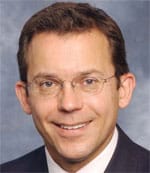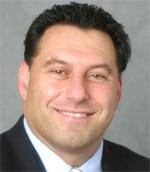SECTOR REPORT / GLOBAL CUSTODY
As their clients seek ever-greater returns on their investments, global custodians are finding themselves having to expand into some unfamiliar territory.
 |
Consolidation has been a recurring theme in custody for more than a decade, with global custodians snapping up their smaller competitors. However, in recent years custodians have also been acquiring what on the surface may appear to be rather strange bedfellows: hedge fund administrators.
In 2002 global custodian State Street acquired International Fund Services (IFS), which gave the bank hedge fund accounting and administration capabilities as well as trade support and middle-office services for alternative investments. More recently, in February 2007, in a stock deal valued at $4.5 billion, State Street acquired Boston-based Investors Financial Services, which boosted its assets under custody to more than $14 trillion and shored up its leadership in offshore hedge fund capabilities as well as middle-office outsourcing and private equity accounting.
State Street is not alone. In 2003 Citi bought Forum Financial, a Portland Maine-based provider of fund administration, distribution, fund and partnership accounting, transfer agency and shareholder services, which added a much-needed arrow to Citi’s quiver in terms of its ability to service hedge fund clients. In 2004 JPMorgan acquired Tranaut Fund Administration, a privately owned hedge fund administration services company. “That acquisition gave us capabilities in Dublin, Bermuda and the Cayman Islands for both onshore and offshore funds,” says Robert Caporale, CEO of JPMorgan Private Equity Fund Services and business head of JPMorgan Hedge Fund Services.
 |
|
Aldrich: BNY Mellon is carving out a separate alternatives business. |
Venturing into the world of hedge funds is a major departure from the “long-only” investment funds custodians are used to servicing by providing standardized services such as settlement, safekeeping and securities lending. As Andrew Smith, head of Citi’s North America funds and securities services business, points out, pension funds used to steer clear of hedge funds. “In the early days in particular, if you looked at the profile of the average alternatives manager, you were dealing with a firm of about eight people working out of Connecticut or a Soho loft,” he says. “There were also a number of funds run by California tech entrepreneurs that were not your mainstream asset managers, and a lot of people didn’t recognize the names,” he says.
A lot has changed since then. Institutional asset managers and pension funds now consider alternative asset classes such as hedge funds to be a major part of their investment strategy for generating “alpha.” According to a 2006 Bank of New York and Casey, Quirk & Associates study of more than 100 investment managers, global institutional investor capital in hedge funds will increase from approximately $360 billion to more than $1 trillion by 2010. “Institutional investors will account for more than 50% of the total flows into hedge funds through 2010,” the report stated, adding that retirement plans would represent 65% of total institutional flows.
“We saw servicing hedge funds and private equity funds as a market opportunity,” says Caporale of JPMorgan. “We have been very strong in ‘long-only’ type funds, providing custody, securities lending and fund accounting, but at the other end of the spectrum, we thought, how do we start to service alternative investments? We looked at acquisitions, which led to us acquiring Tranaut.”
As the levels of institutional investment in hedge funds increased, these funds came under increasing scrutiny from both investors and regulators, forcing them to focus on tightening their operational procedures and controls. The custodians saw an opportunity not only to service their investor clients who were expressing more interest in diversifying their investment portfolios but also to offer operational and administrative support to hedge funds themselves, an area that was traditionally the preserve of investment banks offering prime brokerage.
“With the Forum Financial acquisition we got to understand the type of client that buys these funds, as well as investment management firms that sponsor them,” says Smith of Citi. In May 2007 Citi bolstered its capabilities in the hedge funds space, as well as adding new capabilities such as private equity, with the acquisition of Bisys Group. “We now have the ability to provide value-added services such as performance analytics, compliance reporting and partnership accounting and taxation for private equity funds,” says Smith.
The Freedom To Focus
Hedge fund administration has become big business for the major custodians, with a number of leading providers acquiring the back and middle offices of hedge funds, the idea being that while the custodian takes care of the more mundane and menial middle- and back-office functions, the manager can focus on what matters most: generating alpha. “We are working with people who don’t want to build a big middle or back office,” Smith explains. “Compliance, testing and reporting—that is where the custodian comes in. An alternatives investment manager expects the core custody piece just to happen. They are really looking at the value added.”
Given the popularity of hedge funds as an investment vehicle, another trend in recent years has been the launch of hedge funds by traditional long-only investment managers. This has been helped by the popularity of 130/30 funds, which allow long-only managers to short 30% of their portfolio. Leading global custodians have used their earlier hedge fund administration acquisitions to also provide middle- and back-office outsourcing services to traditional investment managers looking to enter the hedge fund space. A good example is JPMorgan, which acquired the middle and back office of Paloma Partners’ investment fund management group in February 2006. Paloma’s personnel and technical platform enhanced JPMorgan’s Hedge Fund Services division, which helped it win additional business, including securing a deal to provide middle- and back-office services for Henderson Global Investors’ hedge funds business.
Bank of New York Mellon, which has seen its hedge fund servicing business grow at a rate of 35%-plus for the past five years, has established a separate alternatives investment services business. “We believe the correct approach is to carve out a separate alternatives business so it is not negatively affected by our bank’s … merger [with Mellon] in any way,” says David Aldrich, business manager of Bank of New York Mellon’s European hedge fund and broker/dealer businesses. For the largest global custodian, with $20 trillion in assets under custody and administration, Aldrich believes trying to complete a major merger and simultaneously change the whole organization so as to make it able to adapt to the fast-moving and rapidly evolving alternatives space would not work. “So what we have created is an alternatives investment services division, which is nimble like a frigate. It is fast moving, rapid response and can change direction quickly,” he says. “While a supertanker takes two miles to stop, your frigate can turn on a sixpence.”
The main focus of Bank of New York Mellon’s $182 billion alternatives business is single-manager hedge funds and funds of hedge funds, as well as a new third business stream, servicing private equity. “These three priorities are where the people and technology spend is going in 2008,” says Aldrich. He believes custodians can really add value in the alternatives space by bundling together different services in the securities servicing, cash management and FX area, effectively becoming a primary banking and asset servicing partner in the alternatives space, which is distinct from the multiple prime broking counterparties most large funds utilize. But servicing investors’ increasing appetite for alternative investments, whether it is hedge funds, private equity, derivatives or real estate funds, requires major investment in both systems and personnel.
Tailored Solutions
Caporale says there are different nuances to alternative investments that need to be considered. For example, hedge funds and private equity funds have different structures. While private equity has more low-volume reporting cycles, hedge funds on the transfer agency side are very performance focused, and they also use a lot of derivatives. Not only that, with the increase in 130/30 funds and UCITS III (Undertakings for Collective Investments in Transferable Securities) permitting the use of derivatives by retail funds in Europe, there is a greater degree of convergence between traditional long-only and hedge fund managers.
 |
|
Caporale: Banks must find the right balance between people and systems. |
“You cannot service hedge funds without servicing derivatives,” says Caporale of JPMorgan. “We have made a lot of investment in this area, and we are still investing heavily.” But while a number of custodians have bought in expertise to service alternative investments, they are also drawing on in-house expertise in other departments of the bank. For example, JPMorgan Worldwide Securities Services (WSS) group aligned itself more closely with its investment bank to help service increasing investor appetite for derivatives. “The same person who manages our investment bank derivatives operations also manages our WSS derivatives operations,” says Caporale. When it set up its Private Equity Funds Services business, the bank commercialized the operations and technology team of its private equity arm, JPMorgan Partners, which it spun off.
Similarly, Citi’s hedge fund services business is an internal joint venture between its Global Transaction Services and prime brokerage business, which was traditionally managed by Citi Global Markets. “It made a lot of sense for us to bundle together prime brokerage with custody so investment managers can use Citi across the board,” says Smith.
When it comes to servicing alternatives, a number of custodians Global Finance spoke to stressed the importance of people. “Technology and systems can service any asset as long as you understand it,” Smith explains. “It is finding the right people to help you understand it.”
Aldrich says being successful in the alternatives space is not just about people. “You also need flexible technology to help streamline some of the processes and to ensure you get the maximum out of people,” he says. For example, Bank of New York Mellon is adapting its fund accounting platform in order to accommodate the increasing use of derivatives by both long-only managers who are launching sophisticated 130/30 and UCITS III funds, and the core market of single-manager hedge funds. It also developed more sophisticated reconciliation tools for both assets and cash so it can handle much higher volumes. “What you have got to do in this new world of innovation and hybridization of instruments and investment management techniques is to scale both your accounting capability and instrument processing capability,” Aldrich asserts.
“With alternatives it is about valuation more than it is about buying and selling and clearing,” says Smith. “You may know how it settles and you can pay for it, but can you price it on any given day or quarter end? Custodians are saying we need to figure out how to handle hard-to-price instruments.”
Caporale believes banks need to achieve the right balance between systems and people in the alternatives space. “We are investing in our core securities platform to take advantage of opportunities in 130/30 funds,” he says. The old adage that custodians must go where their customers take them, whether it is into emerging markets, derivatives or private equity funds, has never been truer. But how can custodians keep pace with what is a rapidly evolving and changing marketplace? “We have a client advisory board that helps us understand what markets investment managers are going into,” says Smith of Citi. “We are an extension of their product development arm so it is more of a partnership approach.”
Aldrich concedes it is always going to be a challenge for custodians to keep up with investors’ appetite for alternatives. “We need to build new bespoke factories all the time,” he says. “As soon as 80% of one automated processing capability is completed, the industry has invented another instrument, and we need to move our processes into that space. Even though we are investing many millions of dollars in technology and people, it is difficult to see precisely what is ahead. It is a constant game of catch up.”
Anita Hawser



